As Thailand becomes as popular a holiday destination with Westerners as, say, Spain is for the British, it in turn is losing its appeal to more hardened travellers. Now, those looking for something a little more exotic are looking further a field.
There’s no need to look far either – the country formerly known as Burma (now Myanmar) lies to the west, and there’s Malaysia if you head south. But many travellers are now doing what any good explorer would do – heading east.
The round trip through Laos, Cambodia and Vietnam (the countries border each other in such a way that you can visit in any order you wish) is slowly becoming a well-trodden path. As Thailand loses its exotic feel, its neighbours are proving to offer more to those willing and curious to dip yet more of their extremities into Southeast Asian culture. That’ll be me, then.
With just a month to do the trip, I factor in a couple of flights. While Southeast Asian public transport is probably more reliable than its British counterpart, it is a whole lot slower. And so I visit all three countries comfortably in the time I have, and discover three completely different worlds. Despite continually shifting borders throughout their history, and occupation and invasion by a number of world powers, the three countries have each retained a powerful sense of their own identity.
Laos is my first stop; a beautiful country seemingly unmoved by the presence of humans. The miles and miles of lush greenery and striking limestone peaks hide a dark secret however: the estimated quarter of a million unexploded land mines that still litter the country from the Vietnam War.
But as these are slowly cleared, so tourism grows in this country. That the Lao people have learnt a lot already from their Thai neighbours is quickly apparent. Head to backpacker hotspot Vang Vieng (popular for its caves and tubing down the river) and you’ll find the small town littered with internet cafes and bars showing Friends and The Simpsons much as you would in Thailand’s islands. But that the Lao people are still getting used to Westerners is also obvious. While many Thais now greet typical Westerners abroad behaviour with rolling eyes and a supermarket checkout grimace, Lao people are still flashing genuine smiles as you get your wallet out.
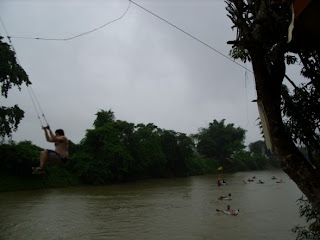
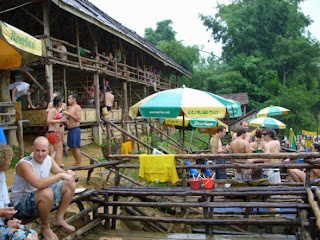 Vietnam, on the other hand, is a whole different net of fish. Laos certainly doesn’t prepare you for it. Not even some time in Bangkok, crazy as that is, can prepare you for it. With a population of 83 million, Vietnam squeezes more people, culture, history and beautiful natural environments on to that thin strip of land than you could have thought possible.
Vietnam, on the other hand, is a whole different net of fish. Laos certainly doesn’t prepare you for it. Not even some time in Bangkok, crazy as that is, can prepare you for it. With a population of 83 million, Vietnam squeezes more people, culture, history and beautiful natural environments on to that thin strip of land than you could have thought possible.You get a genuine Asian experience in this country as well. While its neighbours are welcoming Western capitalism and its companies with open arms as they strive to encourage more tourism, the only fast food joint you’ll find in Ho Chi Minh City is a Korean one. For hundreds of years the Vietnamese have been expelling outsiders who’ve come knocking – the Chinese, the Mongols, the French and, of course, the Americans –with varying degrees of success, but always with the fiercely nationalistic pride that is still apparent in the people today.
That said, their tourist industry is the slickest you’ll come across in this part of the world. All the tourist spots can be seen via well-organised trips that are suitable even for the budget traveller like me. I went in to a travel agent to organise one trip and came out with my whole stay in Vietnam organised, not because I’m an easy sell, but because that really is the best and easiest way to see this awesome and overwhelming country. A downside to this? That it’s so slick, it feels a bit conveyer belt.
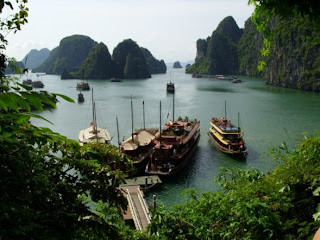
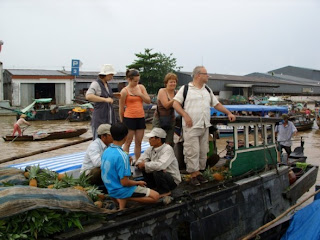
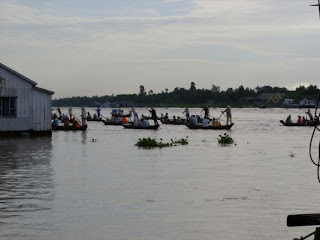
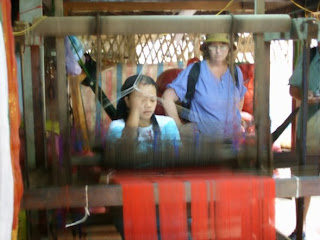 No chance of that in Cambodia, however, where it’s back to the more Thai style of tourism – milking you of cash at every opportunity and shoving as many of you into a minibus as possible. It says a lot about what Cambodians have been through in recent times that their main source of national pride is some (admittedly mind-blowing) ruined temples built nearly a thousand years ago.
No chance of that in Cambodia, however, where it’s back to the more Thai style of tourism – milking you of cash at every opportunity and shoving as many of you into a minibus as possible. It says a lot about what Cambodians have been through in recent times that their main source of national pride is some (admittedly mind-blowing) ruined temples built nearly a thousand years ago. Said temples, situated at Angkor, may have made Angelina Jolie fall in love with the country, but the unabashed desperation of the people, still reeling both emotionally and economically from the horrific regime of Pol Pot and the Khmer Rouge, ultimately makes it a hard place to love.
I suppose it depends on how you look at it. Maybe you can’t blame teenagers trying to sell you bracelets you don’t want for repeatedly using the ‘No money, no school’ line on tourists (the first time is heart-breaking, the 15th time it just feels like a lame con). And maybe you can take the relentless sellers that greet you in your face at the entrance of each sight if you think about how much they depend on the money they earn from doing it.
But when you hear from those charities and organisations that have come to help that Cambodians actually hire children from parents to go and beg from tourists, you begin to wonder which ones are the genuinely desperate and which ones are hiding a more greedy nature.

